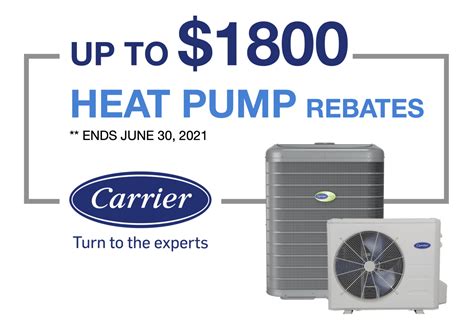In an era where energy efficiency and sustainability are paramount, homeowners are increasingly looking for effective solutions to reduce their energy bills. One such solution is the installation of heat pumps, which not only promise energy savings but also come with federal rebates that can significantly reduce the upfront costs. This article will delve into the workings of heat pumps, the federal rebate program, and how these factors can lead to substantial savings on your energy bills.
Understanding Heat Pumps
Heat pumps are mechanical devices that transfer heat from one place to another. They can be used for both heating and cooling spaces, making them versatile appliances for year-round comfort. Unlike traditional heating systems that generate heat (like furnaces), heat pumps move heat, either extracting it from the air or ground and transferring it indoors during winter, or vice versa during summer months.
One of the most appealing aspects of heat pumps is their efficiency. The efficiency of a heat pump is measured in terms of the Coefficient of Performance (COP), which often exceeds 3.0, meaning they can produce three times the energy they consume. This translates to reduced energy bills and a smaller carbon footprint, making them ideal for eco-conscious homeowners.
The Federal Rebate Program
The federal government has introduced a rebate program designed to encourage homeowners to invest in energy-efficient appliances, including heat pumps. This initiative, part of a broader effort to promote renewable energy and energy conservation, provides incentives that can significantly lower the cost of purchasing and installing a heat pump.
Currently, homeowners can receive rebates that cover a substantial portion of the system’s cost, effectively reducing the financial burden associated with upgrading their heating and cooling systems. The exact amount of the rebate varies based on several factors, including the type of heat pump and local energy efficiency standards.
How to Qualify for the Rebate
To be eligible for the federal rebate, homeowners must ensure that the heat pump they choose meets certain energy efficiency standards as defined by the U.S. Department of Energy. This might involve:
- Selecting a heat pump with a high seasonal energy efficiency ratio (SEER) and heating seasonal performance factor (HSPF).
- Hiring certified professionals for installation, as improper installation may affect the system’s efficiency and eligibility for rebates.
- Submitting the proper documentation, including proof of purchase and installation, to the appropriate federal or state agency.
How Heat Pumps Slash Energy Bills
By choosing to install a heat pump and taking advantage of federal rebates, homeowners can see tangible benefits in their monthly energy bills. Here’s how heat pumps can lead to savings:
1. Reduced Energy Consumption
Because heat pumps move heat rather than generate it, they require less energy to maintain a comfortable indoor environment. This leads to significant reductions in energy consumption, which directly correlates to lower utility bills.
2. Increasing Home Value
Beyond immediate savings on energy bills, installing a heat pump can enhance the overall value of your home. Energy-efficient properties are increasingly attractive to potential buyers, which can yield a higher resale value.
3. Low Maintenance Costs
Heat pumps typically require less maintenance compared to traditional heating systems, which can further contribute to savings. With fewer mechanical parts at play, there are fewer opportunities for costly repairs and maintenance checks.
4. Enhanced Comfort
Heat pumps also deliver a more consistent temperature throughout the home, eliminating hot and cold spots. This improved comfort can lead residents to utilize heating and cooling less frequently, resulting in additional energy savings.
Conclusion
Investing in a heat pump presents an invaluable opportunity for homeowners to save on energy bills while contributing to a more sustainable future. With the added incentive of federal rebates, now is an ideal time to consider upgrading your heating and cooling system. Not only will you enjoy the immediate benefit of reduced energy costs, but you’ll also be enhancing the value and comfort of your home. As the world moves toward greener solutions, taking advantage of this federal rebate could be a wise financial decision that pays dividends for years to come.
FAQs
Q: What types of heat pumps qualify for the federal rebate?
A: Generally, air-source, ground-source (geothermal), and ductless mini-split heat pumps qualify, provided they meet energy efficiency standards.
Q: How much can I expect to save with the federal rebate?
A: Rebate amounts can vary, but homeowners often report savings ranging from several hundred to a few thousand dollars depending on the heat pump system selected.
Q: Is the installation of heat pumps complicated?
A: While the installation process can vary based on your home’s existing heating and cooling systems, hiring a certified professional will ensure that the installation is performed correctly and efficiently.
Q: Are heat pumps better than traditional heating systems?
A: In many climates, heat pumps are more efficient and cost-effective compared to traditional heating systems, particularly in milder winter months. However, their performance does decrease in extreme cold.
Q: How do I claim the federal rebate?
A: To claim the rebate, you need to keep documentation such as receipts and may need to fill out specific forms required by the federal or state agency administering the program. It’s best to check the specific requirements for your area.
This HTML code provides a structured and comprehensive article, including headings, paragraphs, and lists, suitable for a WordPress environment.
Download Federal Rebate Heat Pump
